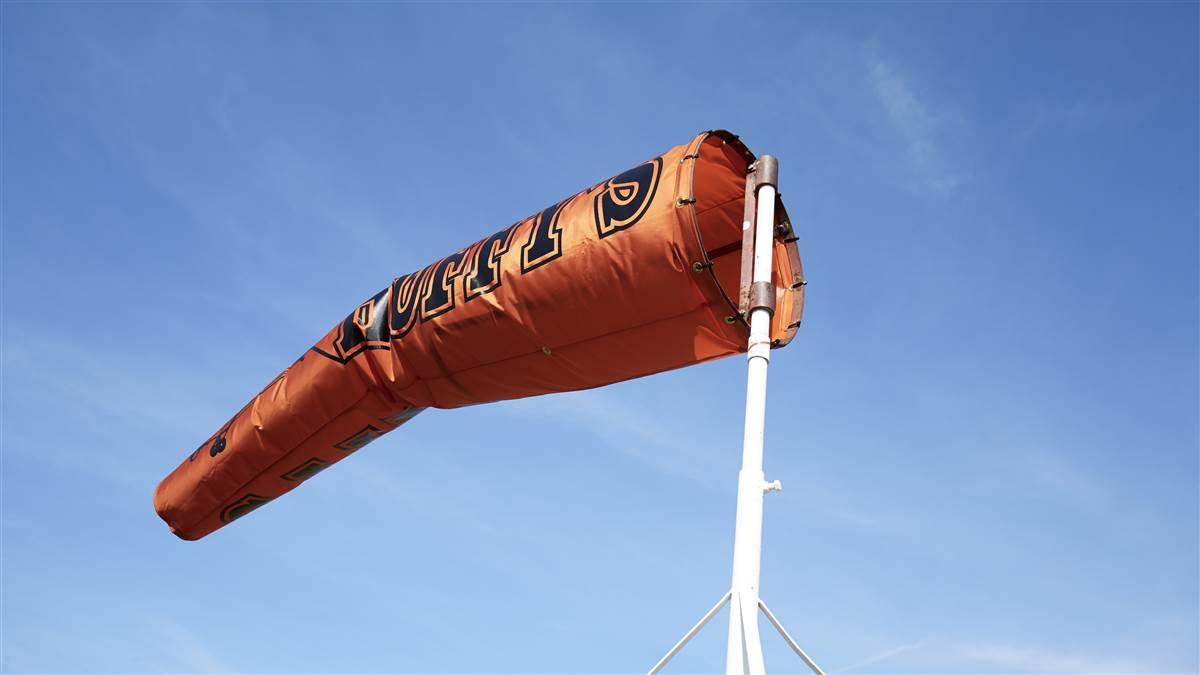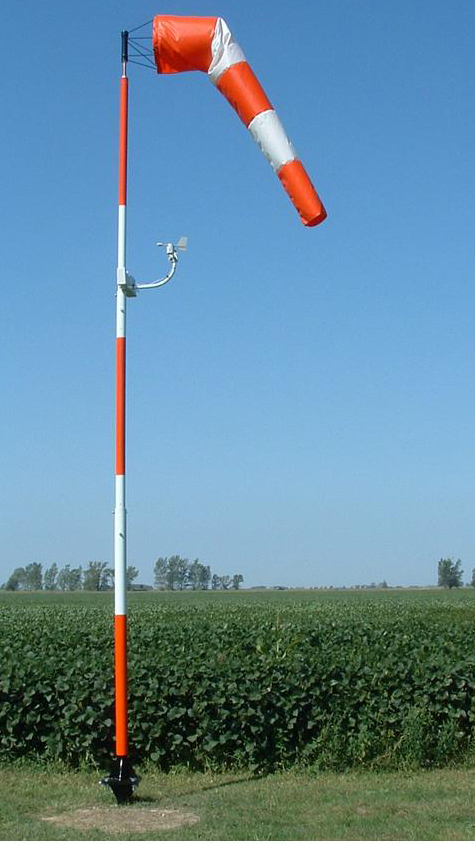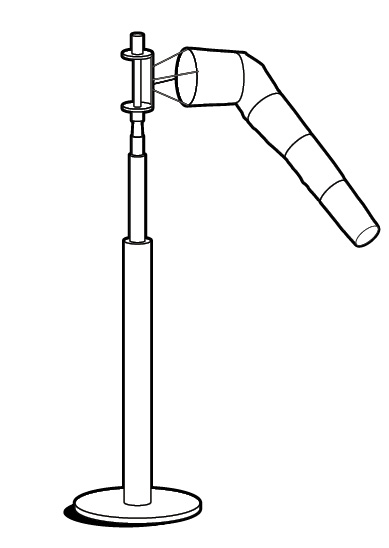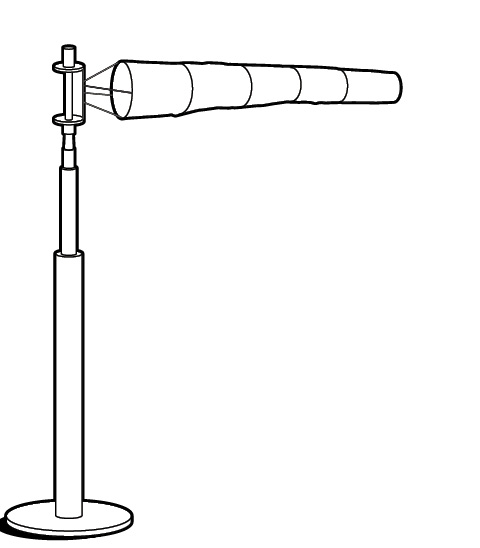
What’s long and orange and found near airport runways? The windsock, of course. This simple textile tube has a big job to do. Yes, it tells you what direction the wind is blowing, but it also indicates the strength of the wind. FAA Advisory Circular 150/5345-27E has standards for windsocks on airports and the first is that the windsock must align with the wind at 3 knots. When fully extended, it aligns with the wind at 15-plus knots. The FAA also says that an airport windsock must be able to withstand temperatures between minus-67 degrees Fahrenheit and 131 degrees F and withstand wind speed of 75 knots. And, the FAA says, airport windsocks can be white, yellow, or orange (see “Stripes Matter,” at right); may be made of cotton or synthetic materials or a combination of both; and must be water-repellent. The FAA also recommends the windsock be placed a distance farther than 25 feet from an obstacle.
A windsock is a cone-shaped bag that is open on both ends, with one end wider than the other. It is attached to a stand (or mast) by a pivot and must be free to rotate on the vertical axis (mounting pole). Air flows in the wider end. Windsock seams align at three o’clock and nine o’clock on the pole. The measurement of speed is the windsock’s angle relative to the pole—in low wind, the windsock droops; in high wind, the windsock flies horizontally. A fully extended windsock suggests a wind speed of 15 knots or higher.
Fact: Windsocks on farm fields help in targeting the spray drift for crop dusters as they apply chemicals.

History
Windsocks trace their origin to 105 A.D. when used by Romans as military banners. In Japan, windsocks made of paper or silk resembling carp (fish) celebrate the birth of a child—usually a boy. Windsocks are also referred to as wind cones, wind sleeves, and drogues.
An anemometer is another device that measures the speed of the wind. This anemometer is part of a weather station mounted to the windsock pole






